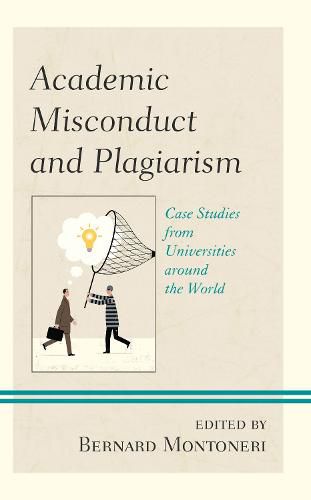Readings Newsletter
Become a Readings Member to make your shopping experience even easier.
Sign in or sign up for free!
You’re not far away from qualifying for FREE standard shipping within Australia
You’ve qualified for FREE standard shipping within Australia
The cart is loading…






This book discusses the issue of academic misconduct and publication ethics in general and plagiarism in particular, with a focus on case studies in various universities around the world (notably in Japan, Singapore, Australia, USA, and Canada). We are especially interested in students’ and teachers’ perception of academic misconduct and their definition and understanding of plagiarism. Most chapters discuss undergraduates’ understanding of academic dishonesty and students’ experiences using plagiarism softwares. The book also analyzes teachers’ perception of cheating and how they respond to it. Writing is perceived by all of the teachers to be the most important form of assessment that required preventative measures in order to reduce the occurrence of academic dishonesty among students. Each chapter recommends strategies to fight plagiarism, such as establishing guidelines and regulations concerning academic integrity, awareness of the scale of the issue (scandals at all levels in most countries, even including famous scholars, administrators, and elected officials), assessing the damage done to academic reputation and credibility, developing trust and credibility on social media (especially with the recent disturbing growth of fake news and data), minimizing the proliferation of dishonest accreditation, of identity theft, of fake peer-reviews, and fighting the growing number of fake papers, with or without the use of computer-generated academic works.
$9.00 standard shipping within Australia
FREE standard shipping within Australia for orders over $100.00
Express & International shipping calculated at checkout
This book discusses the issue of academic misconduct and publication ethics in general and plagiarism in particular, with a focus on case studies in various universities around the world (notably in Japan, Singapore, Australia, USA, and Canada). We are especially interested in students’ and teachers’ perception of academic misconduct and their definition and understanding of plagiarism. Most chapters discuss undergraduates’ understanding of academic dishonesty and students’ experiences using plagiarism softwares. The book also analyzes teachers’ perception of cheating and how they respond to it. Writing is perceived by all of the teachers to be the most important form of assessment that required preventative measures in order to reduce the occurrence of academic dishonesty among students. Each chapter recommends strategies to fight plagiarism, such as establishing guidelines and regulations concerning academic integrity, awareness of the scale of the issue (scandals at all levels in most countries, even including famous scholars, administrators, and elected officials), assessing the damage done to academic reputation and credibility, developing trust and credibility on social media (especially with the recent disturbing growth of fake news and data), minimizing the proliferation of dishonest accreditation, of identity theft, of fake peer-reviews, and fighting the growing number of fake papers, with or without the use of computer-generated academic works.